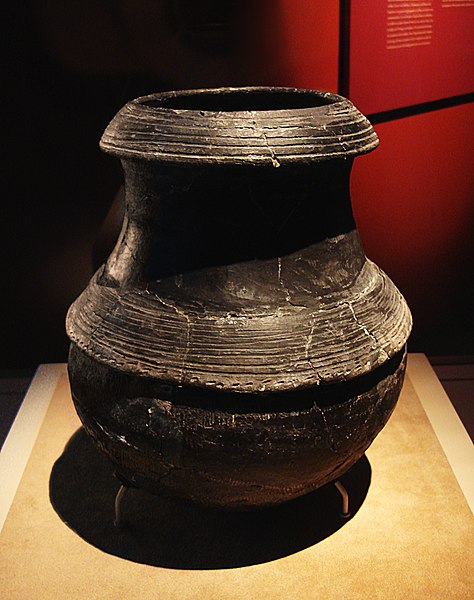The Majiabang culture, formerly also written Ma-chia-pang, was a Chinese Neolithic culture that occupied the Yangtze River Delta, primarily around Lake Tai west of modern Shanghai and north of Hangzhou Bay. The culture spread throughout southern Jiangsu and Zhejiang north of Hangzhou Bay from around 5000 BC to 3300 BC, coexisting with the Hemudu culture in Zhejiang south of the bay. The later part of the period is now considered a separate cultural phase, referred to as the Songze culture. The Majiabang and Songze cultures were succeeded in their area by the Liangzhu culture.
A Pottery Cooking Stove that has been found at Weidun site.
Majiabang Jade Jue
Majiabang red pottery.
Majiabang Wooden Oar
The Hemudu culture was a Neolithic culture that flourished just south of the Hangzhou Bay in Jiangnan in modern Yuyao, Zhejiang, China. The culture may be divided into early and late phases, before and after 4000 BC respectively. The site at Hemudu, 22 km northwest of Ningbo, was discovered in 1973. Hemudu sites were also discovered at Tianluoshan in Yuyao city, and on the islands of Zhoushan. Hemudu are said to have differed physically from inhabitants of the Yellow River sites to the north. Some authors propose that the Hemudu Culture was a source of the pre-Austronesian cultures.
Pottery bowl with pig image, Hemudu culture
Black pottery of the Hemudu culture
Neolithic ivory phoenix. Hemudu culture







